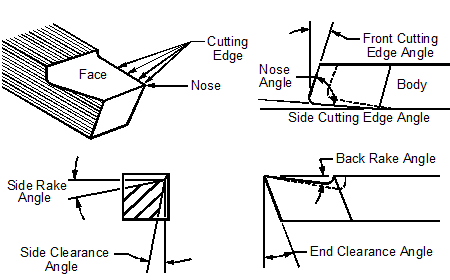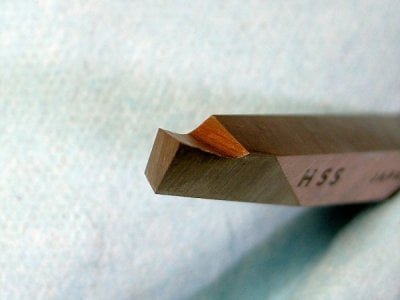Table of Contents
Grinding turning tools involves shaping and sharpening the tool to achieve a precise cutting edge. It ensures efficient and accurate machining.
Turning tools are essential in metalworking for shaping materials on a lathe. Proper grinding of these tools is crucial for achieving optimal performance and longevity. The process involves using a grinding wheel to remove material from the tool, creating a sharp, precise edge.
This sharpness allows for smoother cuts, better surface finishes, and reduced tool wear. Selecting the right grinding wheel and maintaining the correct angles are vital for effective grinding. Regular inspection and maintenance of turning tools ensure consistent quality and efficiency in machining operations. Mastering the grinding process can significantly enhance productivity and reduce manufacturing costs.
Introduction To Grinding Turning Tools
Sharp tools are very important for turning. They make clean and precise cuts. Blunt tools can cause damage to the workpiece. Sharp tools also reduce the effort needed to turn the material. This makes the job easier and safer. Proper grinding can extend the life of the tool. Always check if the tool is sharp before starting any work.
Always wear safety goggles when grinding tools. They protect your eyes from flying particles. Gloves can protect your hands from cuts and burns. Make sure the grinding wheel is in good condition. A damaged wheel can break and cause injury. Keep a first aid kit nearby for emergencies. Follow all safety rules and guidelines. Your safety is the most important thing.
Essential Grinding Equipment
Bench grinders are great for grinding turning tools. They are mounted on a workbench. These grinders have two wheels. One wheel is for coarse grinding. The other wheel is for fine grinding. They are easy to use and very effective. Always wear protective gear when using them.
Tool sharpening machines are specialized for sharpening. They provide precision and control. These machines are often used by professionals. They can sharpen a variety of tools. Some models come with multiple attachments. This makes them versatile and efficient.
Handheld grinders are portable and easy to carry. They are perfect for small tasks. These grinders are powered by batteries or electricity. They come with different attachments. This allows for various grinding needs. Handheld grinders are great for quick fixes.
Materials And Tool Types
Grinding turning tools involves selecting materials like high-speed steel and carbide. Specialized grinding wheels ensure precision and efficiency, enhancing tool performance.
High-speed Steel (hss)
High-Speed Steel (HSS) is very popular. It is strong and can handle high temperatures. HSS tools are also very affordable. They are a good choice for many tasks. These tools can be sharpened easily. HSS tools are great for beginners.
Carbide Tools
Carbide tools are very durable. They last longer than HSS tools. Carbide can cut through tough materials. They are more expensive, but worth it. Professionals often use carbide tools. They provide a cleaner cut and better finish.
Ceramic Tools
Ceramic tools are very hard. They resist wear and heat well. Ceramic tools are ideal for high-speed operations. They are more brittle than other tools. Handle with care to avoid breaking. Ceramic tools are best for finishing tasks.

Credit: www.metalartspress.com
Grinding Techniques For Precision
Start with a clean and smooth surface. Dirt or rust can ruin the grinding. Use a wire brush to clean the surface. After cleaning, inspect for any damages. Fix any dents or cracks before grinding. This ensures a better finish.
Keep the tool at the right angle. A consistent angle gives better results. Use an angle guide if needed. This helps in maintaining the same angle. Check the angle often while grinding.
Grinding creates a lot of heat. Too much heat can damage the tool. Use water or oil to cool it down. Dip the tool in water often. This prevents overheating. Always wear safety gear when grinding.
Sharpening Different Cutting Edges
Roughing gouges need a strong edge. Use a grinder to shape the bevel. Keep the tool cool while grinding. Dip it in water often. A sharp edge helps in smooth cutting. Always check the bevel angle. Adjust as needed.
Skew chisels have a long, straight edge. Grind at an angle. Ensure the edge is even. Use a fine wheel for a smooth finish. Avoid overheating. Keep dipping the tool in water. This keeps the edge sharp and cool.
Parting tools need a narrow, sharp edge. Grind both sides evenly. Keep the edge straight. Use a fine grinding wheel. Check the bevel angle often. Dip the tool in water to cool it. A sharp edge lasts longer.

Credit: m.youtube.com
Dressing The Grinding Wheel
Dressing the grinding wheel keeps it sharp. Sharp wheels cut better and faster. It also removes any debris. Clean wheels work more efficiently. This helps in achieving a smooth finish.
Different dressers are available. Diamond dressers are strong and last long. Star dressers are affordable. Choose based on the wheel type. Each dresser has its own use.
Start by turning off the grinder. Hold the dresser against the wheel. Apply light pressure. Move the dresser side to side. This evens out the wheel surface. Repeat until the wheel is smooth.
Maintaining Your Grinding Equipment
Properly maintaining your grinding equipment ensures precise grinding of turning tools. Regular checks and lubrication keep machinery in top condition.
Cleaning Practices
Keep your grinding equipment clean. Remove dust and debris after every use. Use a soft brush for gentle cleaning. Avoid using harsh chemicals. Clean the machine’s surface and moving parts. This helps in maintaining efficiency.
Regular Inspections
Inspect the equipment regularly. Look for signs of wear and tear. Check the alignment of parts. Make sure all components are secure. Tighten any loose screws. Regular inspections prevent accidents.
Wheel Replacement
Replace grinding wheels when they become worn out. Check the wheel’s surface for cracks. A damaged wheel can be dangerous. Install new wheels properly. Follow the manufacturer’s guidelines. Proper wheel replacement ensures safe and efficient grinding.
Advanced Grinding Skills
Custom profiles make tools unique. Use a grinder to shape the tool. Always wear safety glasses. Different shapes serve different jobs. Adjust the grinder for each shape. Keep the tool cool to avoid damage.
Freehand grinding needs practice. Hold the tool steady. Use both hands for control. Move the tool slowly. Watch the shape forming. Stop often to check progress.
Tools can overheat. Dip the tool in water to cool it. Edges might get uneven. Use a fine grinder to smooth them. Tools can break if pressed too hard. Press lightly to avoid breaks.
From Grinding To Turning: The Transition
Sharp tools make better cuts. Always test your tools before using them. Use a piece of scrap wood. Run the tool across the surface. Check for smooth and clean cuts. If there are jagged edges, the tool is not sharp. Re-grind it until it is sharp. Sharp tools also last longer.
Adjust your tools for better performance. Use the right angle for grinding. Ensure the tool fits well in the machine. Tighten all screws and bolts. Test the tool on a small project. Make adjustments if needed. Proper adjustment makes work easier. It also improves safety.
Use the right tool for the desired finish. Different tools give different finishes. Use fine-grit wheels for smooth finishes. Coarse-grit wheels are for rough finishes. Always clean your tools after use. Store them properly to avoid damage. Practice makes perfect in achieving finishes.
Conclusion: The Edge Of Perfection
Achieving the edge of perfection in grinding turning tools demands precision and skill. Mastering this craft ensures top-notch performance and extended tool life.
Continuous Learning
Learning is a journey. Mastering the art of grinding turning tools takes time. Each tool requires a unique approach. Practice helps in honing skills. Mistakes are part of the process. Never hesitate to try new techniques. Experimentation leads to better results. Patience is key. Observe the work of experts. Take notes and apply them. Stay updated with the latest methods.
Joining A Community Of Craftsmen
Joining a community can be beneficial. Craftsmen share valuable insights. Discussions help in solving problems. Members often share tips and tricks. Networking opens up new opportunities. Online forums are great places to start. Local workshops also offer hands-on experience. Building relationships with peers can be rewarding. Collaboration often leads to innovation. Learning from others is invaluable.

Credit: www.youtube.com
Frequently Asked Questions
How To Grind Your Own Lathe Tools?
To grind your own lathe tools, use a bench grinder. Shape the tool by holding it against the wheel. Ensure proper angles for cutting efficiency. Cool the tool frequently to avoid overheating. Finish by honing the edges with a fine stone.
What Is The Best Grit For Sharpening Turning Tools?
The best grit for sharpening turning tools is 120 to 180 grit. It provides a fine edge and smooth finish.
What Are The Grinding Angles For Woodturning Tools?
Grinding angles for woodturning tools vary. For bowl gouges, use 40-60 degrees. For spindle gouges, use 25-35 degrees. Skew chisels typically require 25-30 degrees. Ensure consistent angles for better performance.
What Grinding Wheel To Sharpen Lathe Tools?
Use an aluminum oxide grinding wheel for sharpening lathe tools. Choose a wheel with a grit between 60 and 80. Ensure the wheel runs cool to avoid overheating.
Conclusion
Mastering the art of grinding turning tools enhances precision and efficiency. Proper technique ensures sharp, durable tools. Regular maintenance extends their lifespan. Invest time in learning these skills to achieve superior results in your machining projects. Stay consistent and diligent for optimal performance and productivity.
